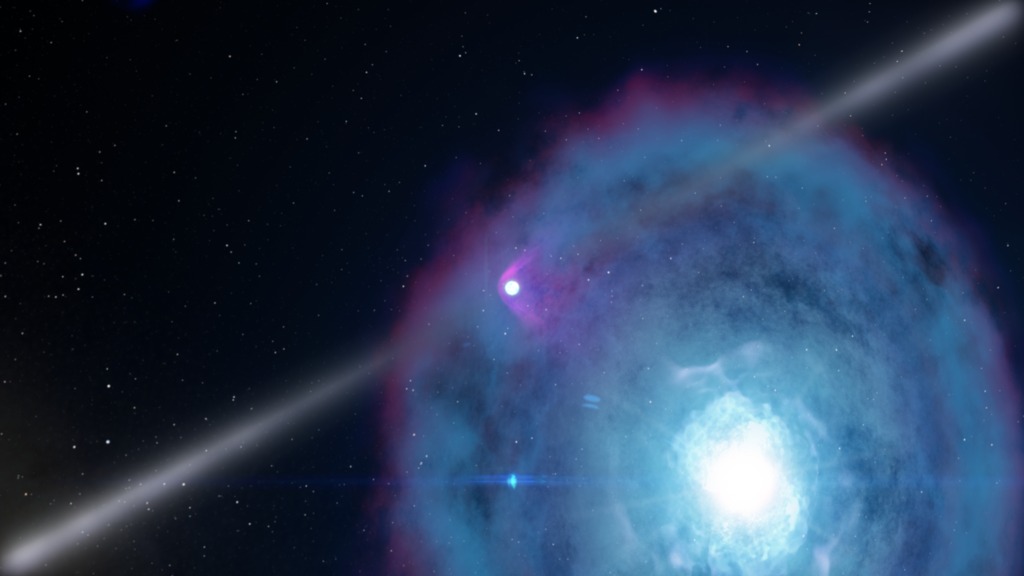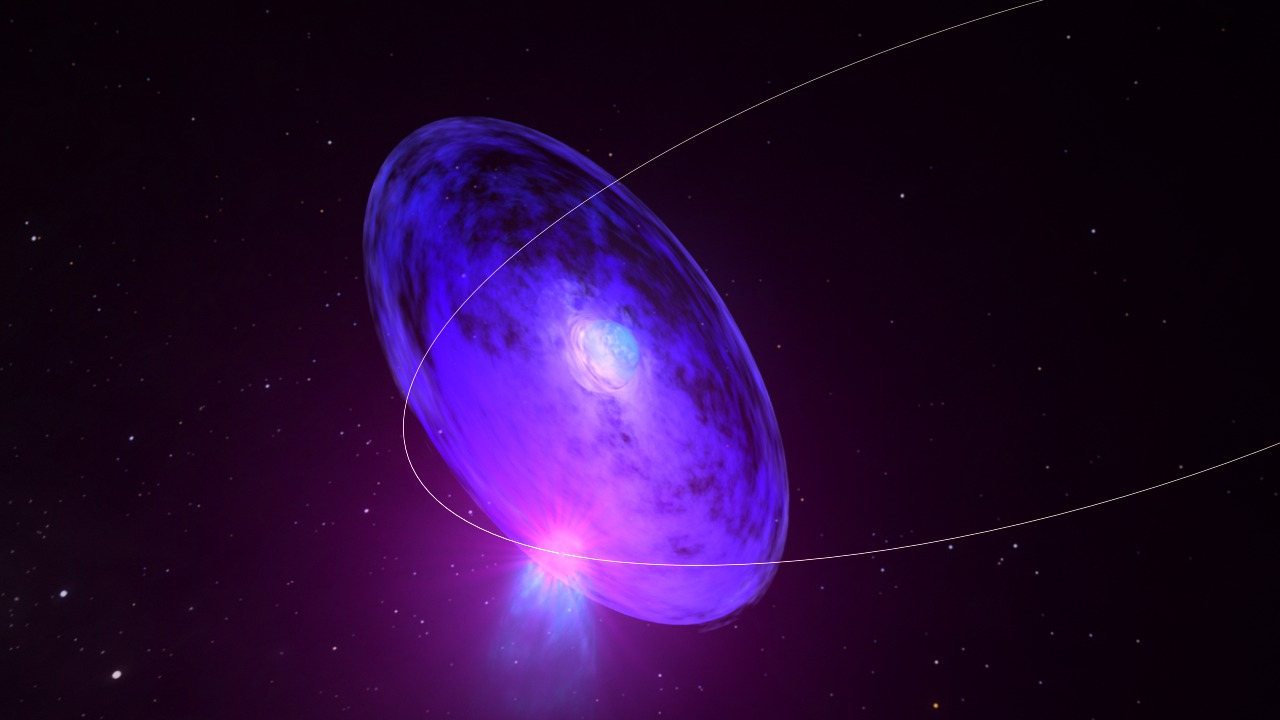Astronomers Predict Cosmic Light Show from 2018 Stellar Encounter
Coming attraction: Astronomers are expecting high-energy explosions when pulsar J2032 swings around its massive companion star in early 2018. The pulsar will plunge through a disk of gas and dust surrounding the star, triggering cosmic fireworks. Scientists are planning a global campaign to watch the event across the spectrum, from radio waves to gamma rays.
Credit: NASA's Goddard Space Flight Center
Watch this video on the NASA Goddard YouTube channel.
For complete transcript, click here.
Astronomers are gearing up for high-energy fireworks coming in early 2018, when a stellar remnant the size of a city meets one of the brightest stars in our galaxy. The cosmic light show will occur when a pulsar discovered by NASA's Fermi Gamma-ray Space Telescope swings by its companion star. Scientists plan a global campaign to watch the event from radio wavelengths to the highest-energy gamma rays detectable.
The pulsar, known as J2032+4127 (J2032 for short), is the crushed core of a massive star that exploded as a supernova. It is a magnetized ball about 12 miles across, or about the size of Washington, weighing almost twice the sun's mass and spinning seven times a second. J2032's rapid spin and strong magnetic field together produce a lighthouse-like beam detectable when it sweeps our way.
The pulsar orbits a massive companion named MT91 213. Classified as a Be star, the companion is 15 times the mass of the sun and shines 10,000 times brighter. Be stars drive strong outflows, called stellar winds, and are embedded in large disks of gas and dust.
Following an elongated orbit lasting about 25 years, the pulsar passes closest to its partner once each circuit. Whipping around its companion in early 2018, the pulsar will plunge through the surrounding disk and trigger astrophysical fireworks. It will serve as a probe to help astronomers measure the massive star's gravity, magnetic field, stellar wind and disk properties.
Read more at http://www.nasa.gov/feature/goddard/astronomers-predict-fireworks-from-rare-stellar-encounter-in-2018
Credits
Please give credit for this item to:
NASA's Goddard Space Flight Center. However, individual items should be credited as indicated above.
-
Producer
- Scott Wiessinger (USRA)
-
Animators
- Walt Feimer (HTSI)
- Scott Wiessinger (USRA)
- Cruz deWilde (Avant Gravity)
-
Writer
- Francis Reddy (Syneren Technologies)
-
Scientist
- Paul Ray (NRL)
-
Editor
- Scott Wiessinger (USRA)
-
Narration
- Chris Meaney (HTSI)
- Joy Ng (USRA)
- Rob Andreoli (Advocates in Manpower Management, Inc.)
- Swarupa Nune (InuTeq)
Release date
This page was originally published on Thursday, July 2, 2015.
This page was last updated on Wednesday, May 3, 2023 at 1:49 PM EDT.
Missions
This visualization is related to the following missions:Series
This visualization can be found in the following series:Tapes
This visualization originally appeared on the following tapes:-
Fermi Binary Pulsar
(ID: 2015051)
Tuesday, June 30, 2015 at 4:00AM
Produced by - Robert Crippen (NASA)


